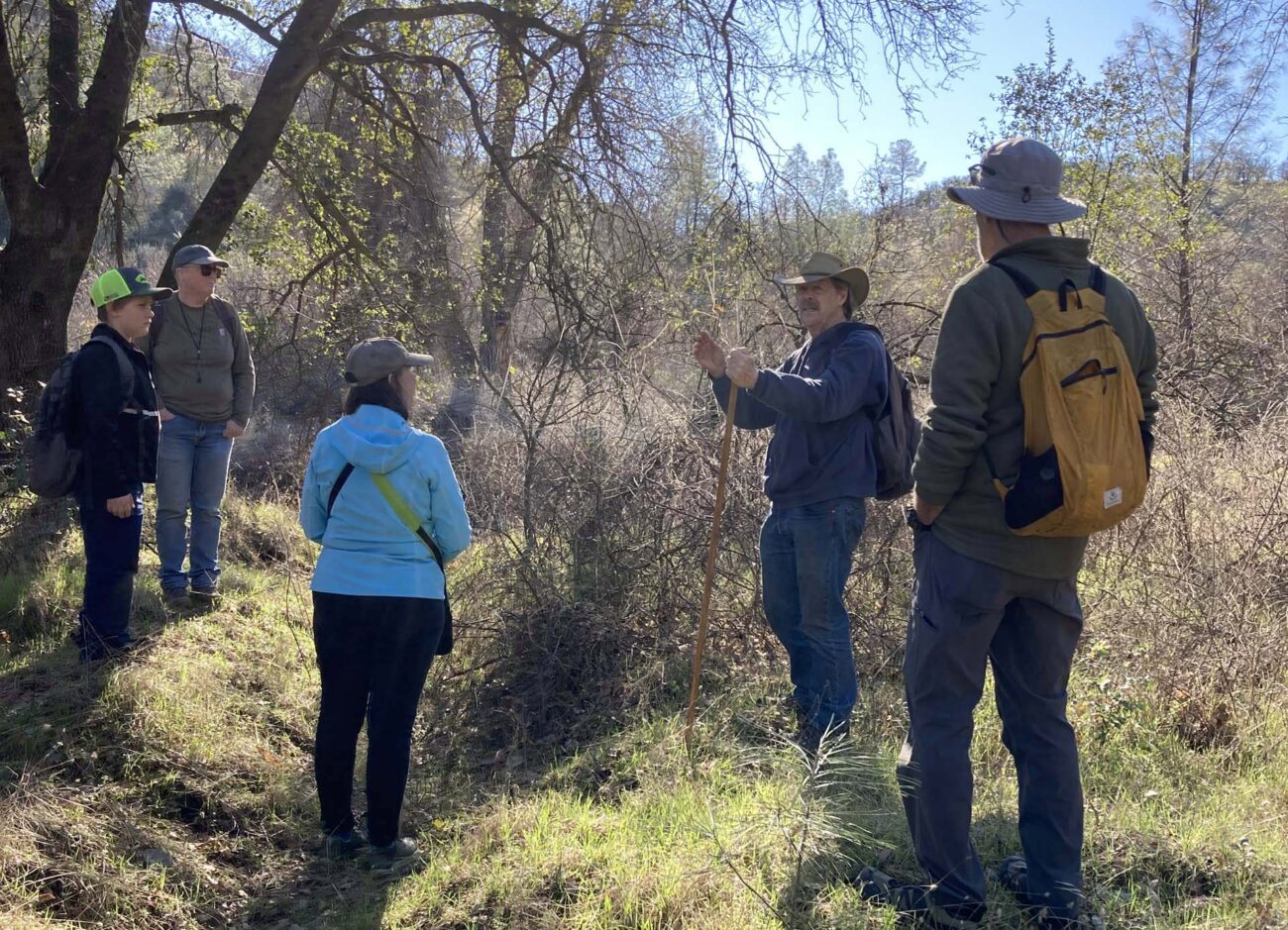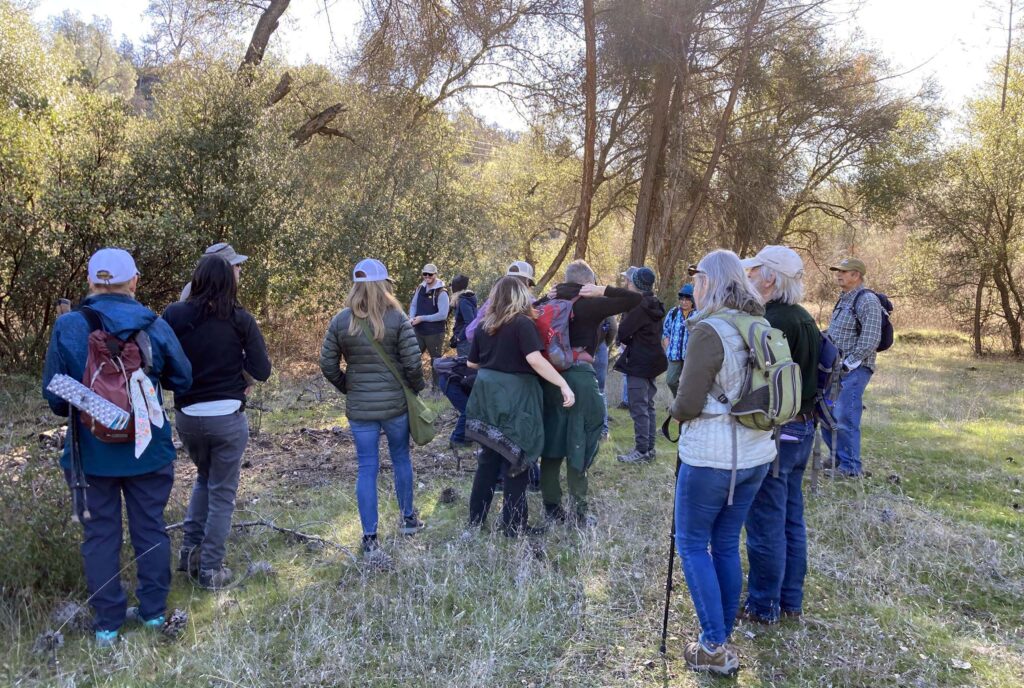
Photo taken by Lisa Ross.
We had a good crowd for our January 11 field trip at the Coleman National Fish Hatchery on Battle Creek and its associated powerhouse. Over 30 people attended, including a few children and two dogs.

As we drove to the hatchery, we passed a man on the bridge over the Sacramento River who was throwing dead salmon into the water. Later, as we were walking through the fish hatchery, this man arrived and explained to us that he was a volunteer at the hatchery, and that they throw some of the dead salmon back into the river to return nutrients that would have been released had the fish made it upstream.
At the fish ladder next to Battle Creek, the water was so high that some fish could make it over the top of the dam. At lower water levels in the fall, fish are unable to jump the dam and are forced to use the fish ladder leading to the holding tanks, where the fish are later captured, sacrificed, and fertilized to provide fish eggs for the hatchery.
A new bypass has been built through the hatchery that allows winter- and spring-run salmon to swim upstream past the hatchery, hopefully to restore the once-thriving fish population in Upper Battle Creek.
Next we drove upstream, parked at a locked gate and walked up to the Coleman Powerhouse. Water for this electric powerhouse comes down a huge pipe about six feet wide, from the Coleman Forebay some 200 feet in elevation up the hill. This water comes from the south fork of Battle Creek and is transported via the canal and aqueduct across the north fork of Battle Creek to the forebay and on down to the powerhouse.
Current efforts are underway to remove five small hydroelectric dams, (two of which are not working), and several diversion dams that are blocking fish from spawning in this cold-water creek. The Bureau of Reclamation is in charge of the project and many agencies and groups, including Shasta Environmental Alliance, are involved.
We identified many native plants on the trip. This area of southern Shasta County has many California junipers (Juniperus californica), which usually grow as a shrub or a small tree. ~David Ledger
